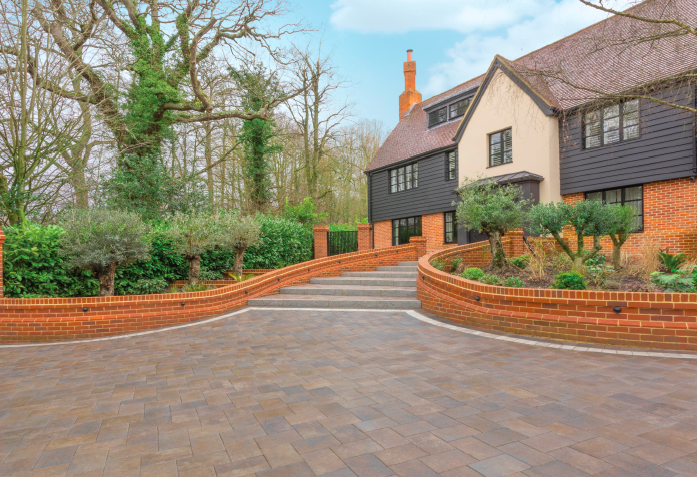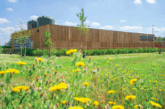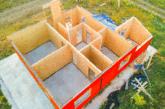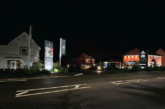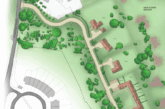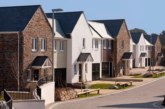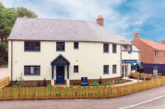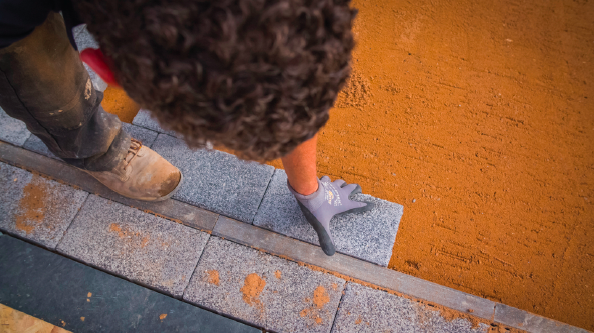
Traditionally, concrete has been seen as a solely practical material – chosen for its strength and durability rather than how it looks. But now, leading manufacturers are making big innovations to transform its concrete’s carbon footprint and update its overall appeal, too. Here, Mike Edwards, Group Head of Sustainability at Marshalls explains the benefits this offers to professional housebuilders looking to strike a point of difference in their landscaping and outdoor living projects.
From pavers, slabs and stepping stones, to retaining walls, planters and more decorative elements, concrete has long played a vital role in the creation of beautiful, durable outdoor spaces. But there’s no getting away from the fact that concrete plays a big part in the construction industry’s carbon footprint, reportedly accounting for around 1.5% of all UK emissionsÅ.
With increasingly stringent regulation forcing the need for housebuilders to operate in more sustainable ways, innovative new products which minimise carbon expenditure are becoming increasingly appealing in outdoor design. Even more popular are those which are both environmentally friendly and stylish, enabling garden designs to come to life – and leading manufacturers are taking note.
Different make-up, same durability
To reduce the carbon footprint of concrete landscaping products, manufacturers are looking at the levels of cement in their mix designs. Cement typically accounts for about 88% of the emissions associated with the average concrete mix, therefore bringing down the amount of cement used can help to dramatically reduce its environmental impact.
Importantly, manufacturers have been able to make this change without impacting on performance. The very latest formulations of concrete enhance itsdurability and improve its resistance to common issues like staining, fading, and frost damage – issues expected to arise in landscaping and outdoor living projects. Better yet, by extending the lifespan of the product, concrete becomes a costeffective choice for housebuilders wanting to create beautiful looking outdoor designs that last.
Recent innovations have enhanced the appearance, texture, and finish of concrete, making it an increasingly appealing choice for housebuilders, particularly for outdoor spaces. What’s more, these advancements have made it easier to incorporate into designs. For example, last year, Marshalls launched Modal X®, a lower-cost, lowercarbon alternative to granite paving that also boasts high durability and design flexibility. It features eight colourways, smooth and textured finishes, fifteen plan sizes and five depths, including three complementary sett sizes with a textured riven surface. Different paving formats such as modern linear units are included in the range to help delineate spaces, while smaller elements can be used for finer detailing and edging, creating character and unique design elements in front and rear gardens and driveways. It uses a new state-of-the-art curing system which speeds curing times but, vitally, also reduces the carbon impact of the range, making it a popular choice for sustainably-aware housebuilders and landscapers.
Technology advancing
The very latest concrete surface printing technology can create stylish concrete pavers available in a wide range of colours and on-trend designs, to truly enhance outdoor spaces while achieving carbon savings, too.
Pavers produced using these methods have excellent colour consistency between batches and, due to their printed surface-coated design, have a hard, protective layer that shields the surface from stains, fading from UV light, frost and abrasion. As well as providing slip resistance to an enhanced slip/skid rating, the protective layer also defends against the possible risk of efflorescence – when salt deposits rise to the top of a surface – which is sometimes experienced with concrete products.
For those using the products in their landscaping and outdoor projects, one of the most significant advantages is time and labour savings. As they are made from concrete, these pavers can be cut without specialist blades and laid in the same way as ordinary concrete or block paving, according to application. As such, housebuilders and developers can remain true to the installation techniques they know and trust.
The industry’s leading manufacturers are truly rethinking concrete, using advancements in technology to transform it into a material that not only meets, but exceeds modern construction demands.
Today, concrete is no longer just a grey, functional material of the past – it’s the foundation of modern design and innovation, and particularly across landscaping and outdoor spaces where innovation is rife. All these benefits mean housebuilders can futureproof their garden projects, with beautiful products that are truly sustainable, too.
Å ICE: Construction sector could more than halve emissions from concrete by 2035 – industry task force at www.rdr.link/dbc029
WANT TO KNOW MORE?
For more information on Marshalls visit www.rdr.link/dbc030

